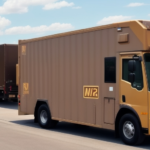Understanding UPS Packing and Shipping Rates
Shipping items has become an integral part of our daily lives, with more people utilizing services like UPS for sending and receiving goods. A critical aspect of the shipping process is understanding the cost implications of using a shipping carrier such as UPS. In this article, we'll explore everything you need to know about UPS packing and shipping rates to help you make informed decisions and save money.
What are UPS Packing and Shipping Rates?
UPS packing and shipping rates refer to the cost of shipping a package using the UPS shipping service. The cost varies depending on several factors, including:
- Weight and size of the package
- Destination of the package
- Type of shipping service used
- Additional services provided by the carrier
UPS offers various shipping options to fit different needs and budgets. For example, customers can choose between ground shipping, typically the most affordable option, or expedited shipping for faster delivery times. Additionally, UPS offers insurance options to protect packages in case of damage or loss during transit. It is recommended to compare rates and services offered by UPS and other shipping carriers to determine the best option for your specific shipping needs.
How Do UPS Packing and Shipping Rates Vary Based on Destination?
The cost of shipping a package using UPS varies depending on the destination. Generally:
- Shipping within the same country costs less than international shipping.
- Shipping to remote locations is more expensive than shipping to urban areas.
Additionally, the weight and size of the package play a significant role. UPS has specific weight and size restrictions, and exceeding these limits may incur additional fees.
UPS offers different shipping options, such as ground, air, and express. The cost of each option varies based on destination, weight, and size. Ground shipping is usually the most affordable but takes longer, while express shipping is more expensive but ensures faster delivery.
The Impact of Package Weight and Size on UPS Packing and Shipping Rates
The size and weight of the package are major determinants of UPS packing and shipping rates. Larger and heavier packages are more expensive to ship than smaller and lighter ones. To minimize costs:
- Use appropriately sized boxes.
- Optimize packaging materials to reduce weight.
The shipping distance also affects the rates; the farther the destination, the higher the cost. When choosing shipping methods and packaging materials, consider both destination and package dimensions to ensure cost-effective and safe delivery.
How Can You Save Money on UPS Packing and Shipping Rates?
There are several strategies to save on UPS packing and shipping rates:
- Use the correct box size: Avoid additional fees for "dimensional weight" by optimizing package size.
- Consolidate shipments: Combine multiple packages into a single shipment to reduce costs.
- Sign up for UPS My Choice: Customize delivery times to avoid additional fees.
- Compare carriers: Evaluate rates and services from UPS, FedEx, USPS, and others to find the best deal.
By researching and comparing prices, you can find the most cost-effective options for your specific shipping needs and budget.
Differences Between Ground, Air, and International Shipping Rates
UPS offers various shipping methods, each with different rates:
- Ground Shipping: The most affordable option but with longer delivery times.
- Air Shipping: Faster delivery but more expensive.
- International Shipping: Rates vary based on the destination country's customs tariffs, shipping regulations, and other factors.
Package weight and size also impact rates across all shipping methods. Additionally, some carriers offer discounts for bulk shipments or frequent shippers, so exploring different options can lead to better rates.
Understanding Surcharges and Fees Associated with UPS Packing and Shipping Rates
Beyond standard shipping rates, UPS applies additional surcharges and fees based on factors such as:
- Residential delivery charges
- Fuel surcharges
- Delivery area surcharges
- Saturday delivery surcharges
UPS also offers additional services that come with their own fees, including:
- Signature Confirmation: Requires a recipient's signature upon delivery.
- Insurance and Declared Value: Protects the package in case of loss or damage.
It's crucial to account for these extra fees to avoid unexpected expenses on your shipping bill.
Additional Services Offered by UPS That Affect Shipping Rates
UPS provides several additional services that can influence your shipping rates:
- Insurance: Protects against loss or damage for high-value items.
- Signature on Delivery: Ensures the package is received by the intended recipient.
- Declared Value Coverage: Provides compensation for lost or damaged items.
- UPS My Choice: Allows customization of delivery preferences, such as specific delivery times or locations, and provides delivery alerts.
- International Shipping Services: Includes assistance with customs documentation and various shipping options tailored to international destinations.
These services can enhance the security and convenience of your shipments but come at an additional cost.
Properly Packaging Your Items for Optimal Shipping Rates
Proper packaging ensures protection and can help reduce shipping costs. Tips for optimal packaging include:
- Use appropriate boxes: Select boxes that fit your items without excessive space.
- Optimize dimensions: Accurate sizing can prevent dimensional weight fees.
- Use protective materials: Bubble wrap, foam, and other materials protect contents during transit.
- Secure contents: Use tape and filler materials to prevent movement within the package.
- Keep weight low: Use lightweight packing materials like air pillows or paper to reduce overall weight without compromising safety.
- Proper labeling: Include the recipient's full name, address, phone number, and your return address. Add special instructions like "fragile" or "this side up" if necessary.
Comparing UPS Packing and Shipping Rates to Other Shipping Carriers
It's advisable to compare UPS packing and shipping rates with other carriers such as FedEx and USPS to ensure you're getting the best rates. Different carriers may offer better rates depending on:
- Distance
- Package size and weight
- Shipping speed
Researching and shopping around based on your specific needs can help you find the most cost-effective carrier.
Tips for Negotiating Lower UPS Packing and Shipping Rates for Your Business
If you run a business and frequently ship packages with UPS, you can negotiate lower prices by:
- Negotiating with the carrier: Leverage your shipping volume to obtain discounts.
- Prepaying for shipments: Committing to a certain volume can secure better rates.
- Consolidating shipments: Combining shipments can reduce overall costs.
- Utilizing the UPS Volume Discount: Explore the UPS volume discount program.
Comparing rates with other carriers can also provide leverage during negotiations to secure more favorable terms.
How Technology is Changing the World of UPS Packing and Shipping Rates
Technology has revolutionized the shipping industry, and UPS is at the forefront of these changes. Innovations include:
- UPS My Choice: Allows real-time package tracking and detailed delivery notifications directly to your device.
- Advanced Tracking Systems: Provide accurate rate displays and help optimize shipping processes.
- Automated Rate Calculators: Save time and effort in finding the best shipping rates.
These technological advancements enhance the efficiency, transparency, and convenience of shipping with UPS.
How to Track Your Packages with UPS
UPS offers multiple ways to track your packages, ensuring you stay informed about your shipment's status:
- Online Tracking: Use the UPS website to enter your tracking number and view real-time updates.
- Mobile Apps: Access tracking information on the go through the UPS mobile application.
- Text Notifications: Receive SMS updates about your package's progress and delivery status.
Effective tracking helps identify potential delivery issues early and allows you to contact UPS customer service promptly to resolve any problems.
The Impact of Seasonal Demand on UPS Packing and Shipping Rates
Seasonal demand significantly affects UPS packing and shipping rates. During peak seasons, such as holidays:
- Shipping volumes increase, leading to limited carrier capacity.
- UPS and other carriers may increase rates to manage high demand.
When planning to send packages during these times, it's essential to account for potential rate increases and limited delivery windows to avoid higher costs and delays.
What to Do If Your Package is Lost or Damaged During Shipping with UPS
If your package is lost or damaged during shipping with UPS, you can take the following steps:
- Document the Damage: Take pictures of the damaged package and its contents.
- Retain Packaging Materials: Keep all packaging and shipping materials as they may be required for the claim.
- File a Claim: Report the loss or damage within the stipulated time frame through UPS's claims process.
- Follow Guidelines: Adhere to UPS's claim procedures to increase the likelihood of receiving compensation.
Proper documentation and timely reporting are crucial for a successful claim.
In Conclusion
Understanding UPS packing and shipping rates is essential for anyone who ships packages regularly. This guide provides the information needed to make informed decisions and save money when shipping with UPS. Remember to:
- Monitor package weight and size
- Consider additional services and their costs
- Plan ahead for peak shipping periods
By keeping these factors in mind, you can optimize your shipping strategy for efficiency and cost-effectiveness.




















